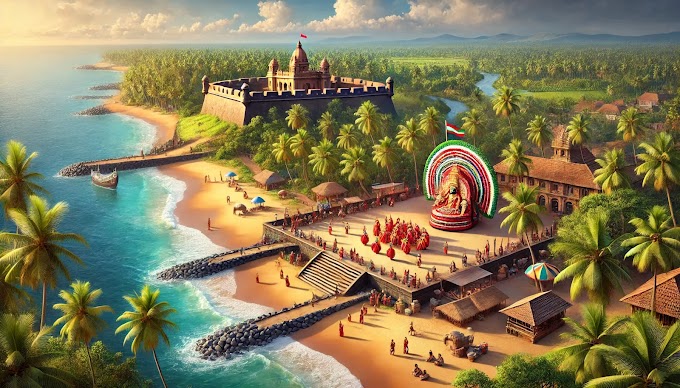Introduction
The Gateway of India, an iconic landmark in the heart of Mumbai, is a magnificent blend of history, culture, and architecture. Built to commemorate the visit of King George V and Queen Mary in 1911, it has now become a testament to India’s colonial past and Mumbai's resilience. This monumental structure, facing the Arabian Sea, is one of Mumbai’s most photographed sites and continues to draw millions of tourists annually. Standing proudly at Apollo Bunder, the Gateway of India isn’t just a historical landmark but a gateway into India’s vibrant past.
History of the Gateway of India Mumbai
The Gateway of India's history dates back to the British social period. The foundation stone was laid in March 1911, following King George V and Queen Mary’s visit to India. Completed in 1924, this structure was designed by the famous British architect George Wittet. Its unique Indo-Saracenic architectural style is highlighted by Islamic, Hindu, and European influences, symbolizing India's multicultural heritage. Initially, the Gateway was a ceremonial entrance for British officials arriving in India, marking its importance as a royal welcome structure.
Architectural Highlights
This imposing monument stands 85 feet tall and is constructed from yellow basalt and reinforced concrete, designed to withstand the test of time. Its Indo-Saracenic style, which includes elements from 16th-century Gujarati architecture, showcases a blend of Hindu and Islamic designs. The large central arch, decorative latticework, and central dome provide a spectacular view of the Arabian Sea. At sunset, the Gateway of India glows with a golden hue, making it a sight to behold. Photography enthusiasts, history buffs, and architecture lovers alike find this site awe-inspiring.
Things to Do When Visiting the Gateway of India Mumbai
- Photography: Capture the stunning views of the monument against the Arabian Sea, especially during the evening when the structure is beautifully illuminated.
- Boat Rides: Enjoy a boat ride from the Gateway, offering a unique perspective of the monument and an unforgettable view of Mumbai's coastline.
- Street Food Experience: The area around Gateway of India is famous for Mumbai's iconic street food, like Vada Pav and Bhel Puri. Don't miss the chance to experience local flavors.
- Cultural Events: The Gateway occasionally hosts cultural and music events, adding vibrancy to this historical location.
Nearby Attractions
Elephanta Caves: Accessible via a ferry ride from the Gateway, the Elephanta Caves are a UNESCO World Heritage site featuring ancient rock-cut temples dedicated to Lord Shiva. These caves date back to the 5th to 8th centuries and are a marvel of Indian rock-cut architecture.
Taj Mahal Palace Hotel: Just opposite the Gateway, the Taj Mahal Palace Hotel is a historic landmark in itself. This luxurious hotel, with its rich history and intricate architecture, has hosted royalty, world leaders, and celebrities since its opening in 1903.
Colaba Causeway: This popular shopping street, located a short distance from the Gateway, offers a variety of handicrafts, artifacts, and street fashion. It’s a haven for shopping enthusiasts looking for souvenirs and unique mementos.
Marine Drive: Known as the" Queen's Necklace," Marine Drive is a graphic street along the seacoast. The glittering lights that outline this coastal stretch make it a popular spot for evening walks and sea views.
Best Time to Visit
The Gateway of India is open throughout the year, but the ideal time to visit is between November and February when Mumbai experiences mild winter. During this season, the weather is pleasant and suitable for outdoor sightseeing. While visiting during the monsoon season (June to September) can also be an experience, heavy rains may sometimes limit outdoor activities.
Travel Tips
- Arrive Early: To avoid the crowds and enjoy peaceful views, it's best to visit early in the morning.
- Respect the Monument: While taking photographs, be mindful of maintaining the site's sanctity.
- Stay Hydrated: If visiting during summer or monsoon, carry water and sunscreen as it can get hot and humid.
Conclusion
The Gateway of India is not merely a tourist destination; it is a journey through Mumbai's past and present. Whether you’re a history enthusiast, an architecture lover, or simply someone seeking a serene view of the sea, the Gateway of India has something to offer everyone. This landmark stands as a symbol of Mumbai’s multicultural history, resilience, and architectural beauty. From the bustling streets nearby to the serene views of the Arabian Sea, this iconic structure is a must-visit for anyone exploring India.






